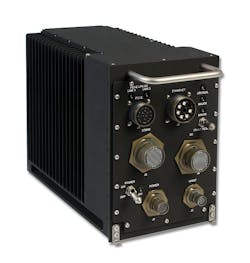VPX Has a Heat Dissipation Problem
Instead of using the board edges to conduct heat, why not use the entire board?.
In a recent post, Embedded Board Standards Are No Longer “Standard” – So Why Aren’t You Looking for Better Alternatives? we talked about the problems related to VPX as a “standard.” It’s clear that it’s become more accurately an “open specification,” which means it’s lost any advantage in terms of interoperability or modularity.
It's true—even our patented technology is still a far cry from what's really needed, which is to get the heat outside the box
But VPX as a design choice has more issues than that. Let’s look specifically at its heat problem.
VPX Wedge Locks Are A Heat Bottleneck
The majority of the VPX boards that are sold go into conduction-cooled systems. In this scenario, you have to take the heat from the entire board, a 6U card. For the sake of argument, let's say that it's 150W that needs to be dissipated. It may be higher than that, but it'll serve well for this discussion.
You have to take that 150W of heat across the board's surface to the ejectors (the fasteners that lock the board in place), also known as the wedge lock. The wedge lock then transfers the heat to the chassis to cool it. This is where the real problem is. The surface area of the wedge lock that can actually conduct that heat is very limited. Consequently, it can't transfer enough surface-area heat from the cold plate out to the wedge lock and from the wedge lock to the ATR box.
Typical VPX module with wedge locks. The green color on each wedge lock is a thermal resistor from the hot board to the cold chassis. This wedge lock isn’t very efficient at heat transfer.
Figure 1 shows a VPX card using standard wedge locks. You can see the thermal dissipation of the heat generated by the microprocessor, with the heat flowing to the wedge lock, right toward the bottleneck (note that anything that's not blue in the figure is bad).
A GMS patented wedge lock does a much better job of transferring heat from the hot VPX board to the chassis.
We’ve come up with a patented architecture for a wedge lock that's a clear improvement for heat transfer, as shown in Figure 2. While it's a clear improvement, it's still not good enough, especially when compared to a GMS chassis that can be built with that same board, but with the heat conducted to the outside. It's true—even our patented technology is still a far cry from what's really needed, which is to get the heat outside the box.
Heat Dissipation Requires “Outside The Box” Approach
Problem 2 arises because once you do transfer heat to the wedge lock inside an ATR box, you're transferring it to the sides of the box. That box could very well be sitting in the cabin of a helicopter or other vehicle. Hence, you have to cool the cabin to keep it from overheating.
This clearly wasn't a problem back at the origin of VPX, because the higher-power boards were only dissipating 30 or 40W. Now, because everything is so highly integrated and processors consume so much power, 150W solutions are common. Heck, the Xeon processor alone could consume 85 to 120W. Also, bear in mind that older systems placed each function on a different card. Today, it's the norm for a motherboard to hold the CPU, memory, graphics, communications, I/O, and so on.
Rather than dissipating heat through a board’s edges, why not use the entire board? This is an example of a GMS small form factor system conducting heat directly to the chassis base.
We came up with a way to integrate that board into a box that sits on the base of the chassis, as shown in Figure 3. As a result, the board's entire surface gets conducted directly through its bottom. Think of it as a 100% heat pipe going directly from the processor to the box's aluminum frame, and NOT through a thin little wedge lock.
Clearly, the advantage of this technique is that there's more surface area to use for cooling, and when you do cool it, you cool the frame. You transfer all the heat directly to the frame of the vehicle or aircraft (and not heat/cool the cabin).




